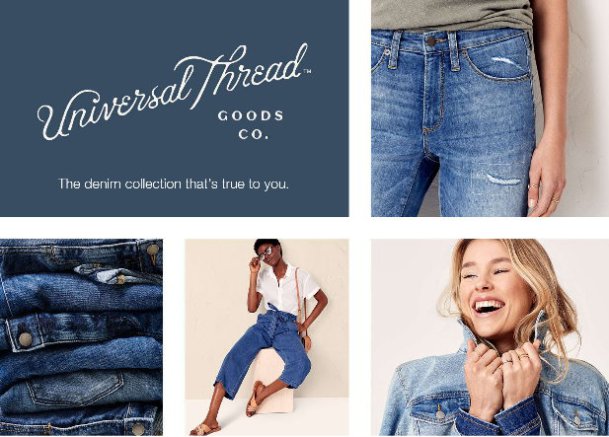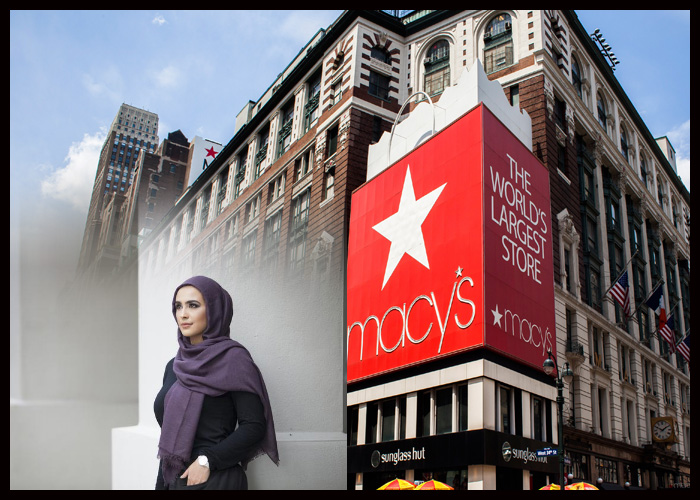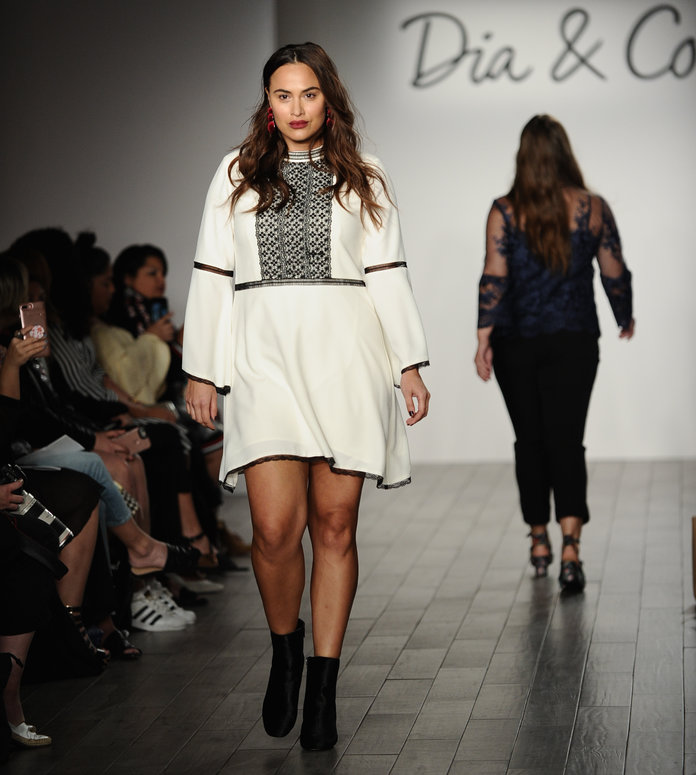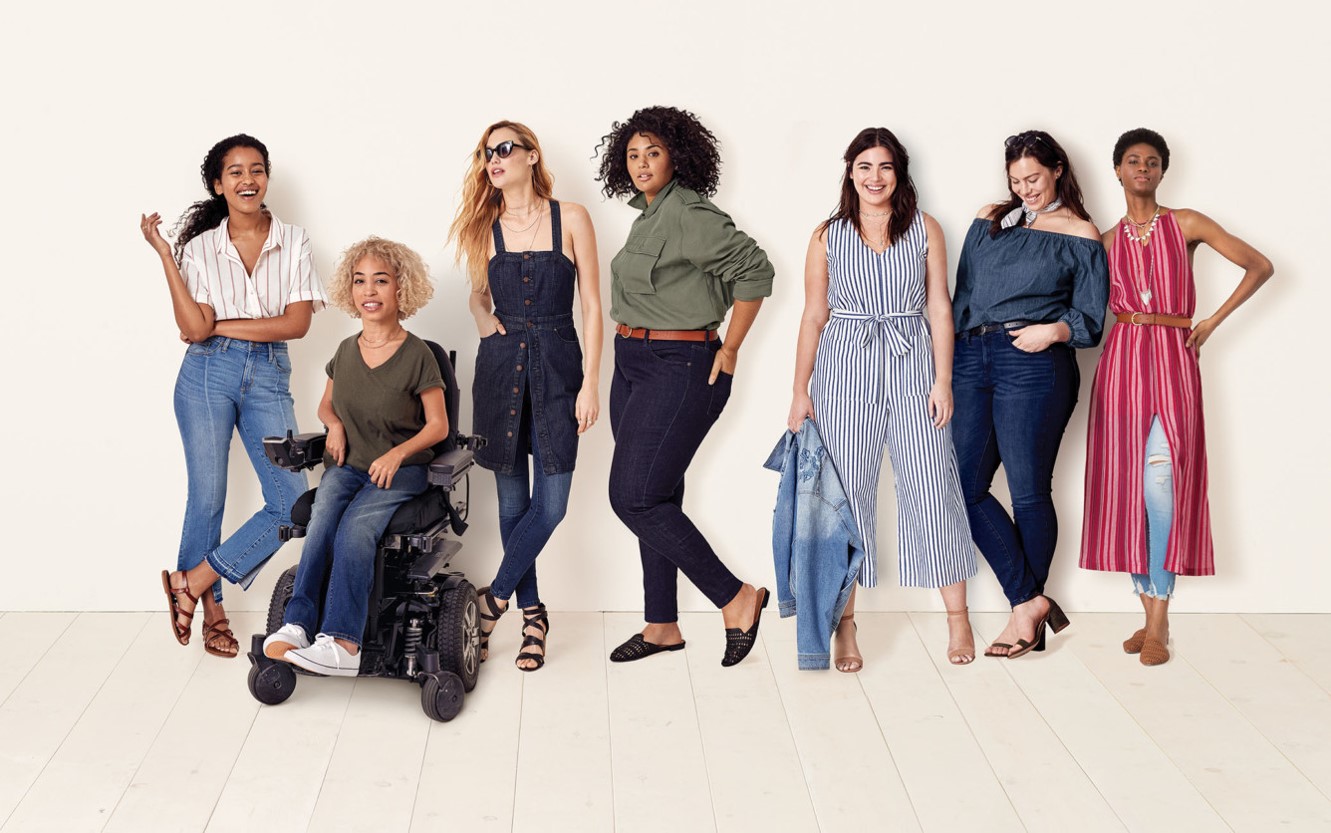 Stories about three fashion brands have me thinking about women and their health economics. Stay with me.
Stories about three fashion brands have me thinking about women and their health economics. Stay with me.
Target unveiled its new line of clothing, Universal Thread, which features pieces that are accessible to women who may be dealing with physical limitations or sensory challenges.
I first read about Universal Thread on The Mighty website, which is a community of over 1 million people interested in connecting on health and disabilities.
As The Mighty described, the brand Universal Thread, “is centered around denim since it is a staple in many women’s wardrobes, but denim can be uncomfortable for many people with disabilities or sensory issues. The line will include denim that has flattened seams to reduce pressure points and jeans with wider legs to help with dressing. The back of the jeans will be pocket-less and will have a higher rise. Sensory-friendly shirts will have flat seams, softer material and no tags.” The items will be priced between $6 and $29.99 for jeans; nothing will be over $40.
 On 15th February, Macy’s launches a new brand of clothing, Verona, targeted to Muslim women, featuring hijabs, maxi dresses, and trousers, among other items, the New York Times reported today. Macy’s conducted a customer workshop last year and learned that there was consumer interest in the company offering these clothing options. Note that The Workshop at Macy’s is an incubator for minority- and women-owned businesses.
On 15th February, Macy’s launches a new brand of clothing, Verona, targeted to Muslim women, featuring hijabs, maxi dresses, and trousers, among other items, the New York Times reported today. Macy’s conducted a customer workshop last year and learned that there was consumer interest in the company offering these clothing options. Note that The Workshop at Macy’s is an incubator for minority- and women-owned businesses.
Macy’s has already been selling Nike’s Pro Hijab for Muslim athletes. InStyle magazine featured Macy’s news, saying that the line, “is unique because it includes easy-to-wear items like tops, pants, cardigans, and dresses that are aimed at both Muslim and non-Muslim women.” The designer of the line, Lisa Vogl, told InStyle, “Verona Collection is more than a clothing brand. It’s a platform for a community of women to express their personal identity and embrace fashion that makes them feel confident on the inside and outside.”

Then there’s Dia & Co., featured in today’s New York Times in a Business section article titled, “Bringing a Personal Touch to Plus-Size Fashion.” The company was started by two entrepreneurs who graduated from Harvard Business School and couldn’t find plus0sized clothing they liked. So in 2015, they started an online site called Dia & Co. The line has been so successful they’ve attracted the likes of designer Nanette Lapore to do her own label called First Curve. One of the secrets in this marketing sauce is that Dia & Co. curates personalized selections of clothing pieces they ship to buyers based on preferences. “While Walmart and Amazon could be formidable competitors,” Marshal Cohen of NPD Group notes, “this customer wants a company that understands her.”
Health Populi’s Hot Points: If you’ve made it this far below the Health Populi news-story fold, you might be wondering: why is Jane talking about women’s fashion in a blog fiercely devoted for over a decade on health consumers. technology and economics.
The three news items on women’s fashion brands speak to all three nouns: consumers, tech and household finance. Women are the Chief Household Officers for their families, increasingly use their smartphones like Swiss Army knives (as my friend and colleagues Susannah Fox once described young peoples’ facility with mobile phones), and are sensitive to costs and out-of-pocket spending, with all three lines priced for mainstream consumers. I recently wrote in Huffington Post about the so-called “tampon tax” on consumer goods marketed to women: women have tended to spend more on the same items that men buy, like deodorant presumably packaged in feminine ways. Oh, and health insurance, too, before there was the Affordable Care Act.
Health care spending is tied up into overall household spending. As most women manage their households, health care marketers should never forget that, increasingly, as patients become payors, a prescription drug fill at the CVS pharmacy in Target may compete on the day with a great pair of Universal Thread jeans.
What can healthcare innovators learn from the three brands’ evolutions? Consider…
- Macy’s workshopped the concept for the hijab-inspired clothing through its incubator which focuses on a specific consumer segment. This is the ethos of user-centered design.
- Dia & Co. identified an under-served market, and better-serves it through curation of clothing that are personalized to each customer’s preferences.
- Target focused on another under-served and fast-growing market of people who can well use clothing that’s easy to take on and off, more comfortable and live-able, at an accessible price-point.
Innovation in health care, in my work-world, incorporates these elements all with the consumer at the center: ID under-served needs, customize and personalize, be digital, be mindful of financial issues, and attend to peoples’ real lives.
#Aim2Innovate, as my HIMSS-colleagues tweet!
PS – This column appears in Fast Company Design moments after I completed this post. It’s about why not to design for the “average” person. Note the third of 3 recommendations nicely fits into my discussion above: inclusive design gives people independence.





 Thanks to Feedspot for naming this blog, Health Populi, as a
Thanks to Feedspot for naming this blog, Health Populi, as a